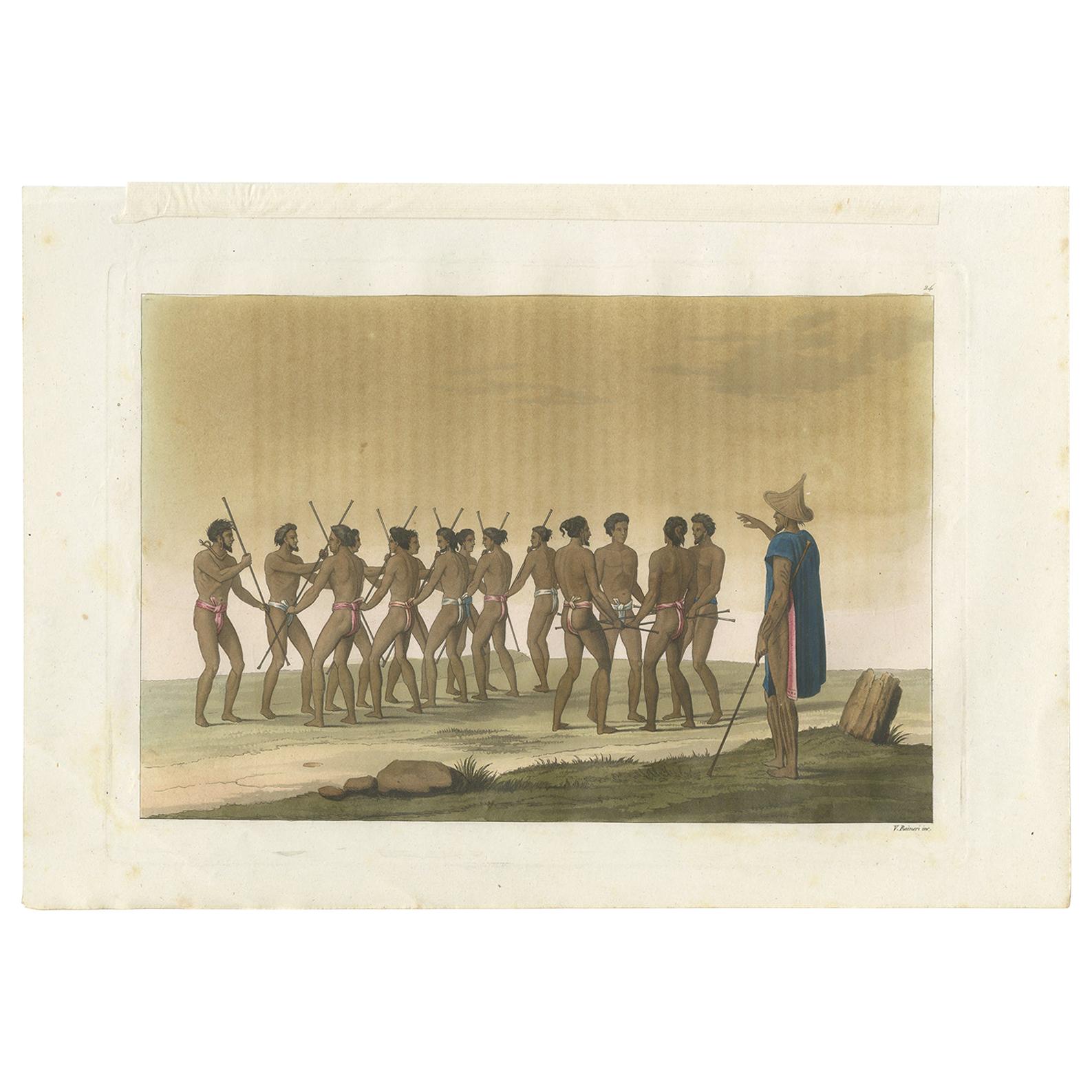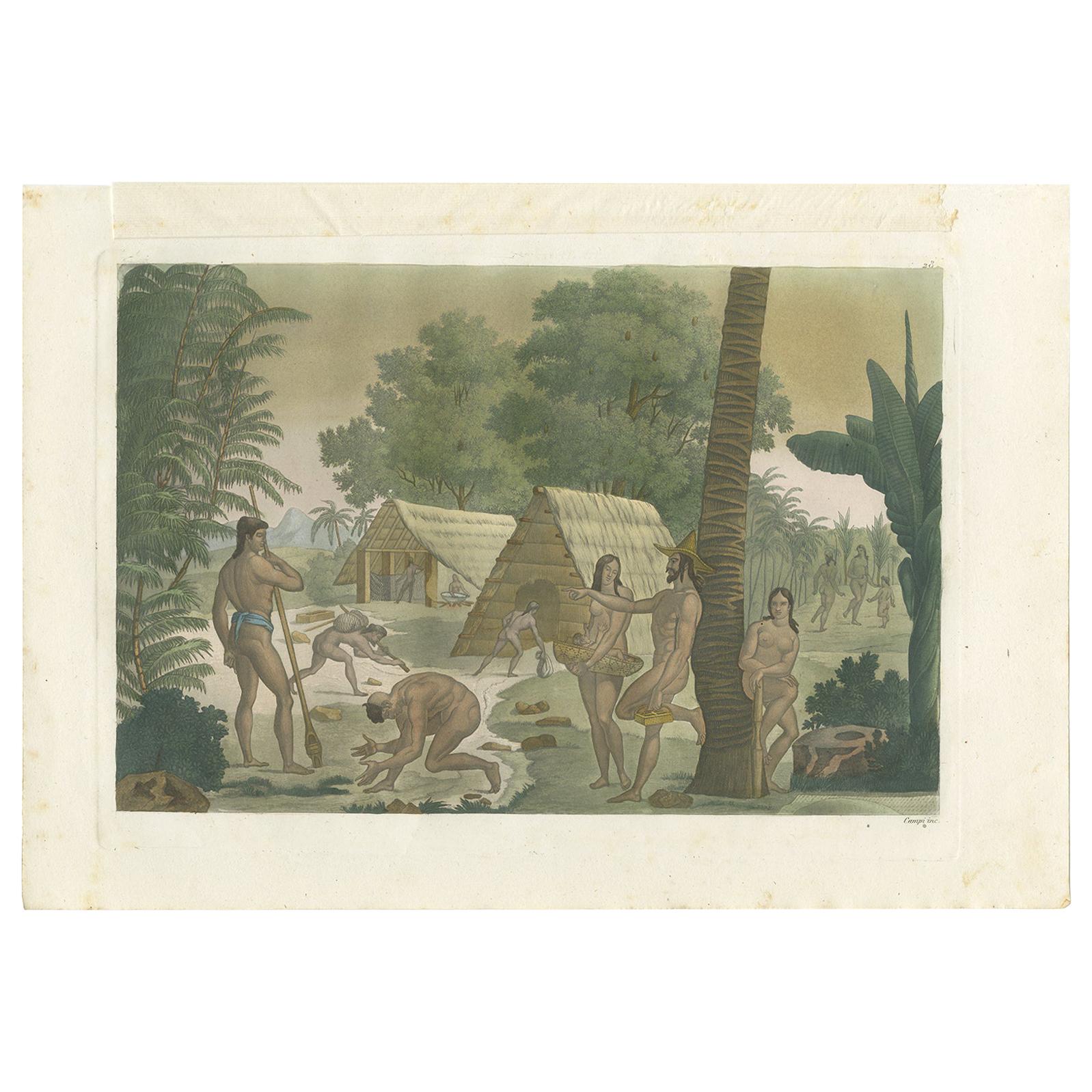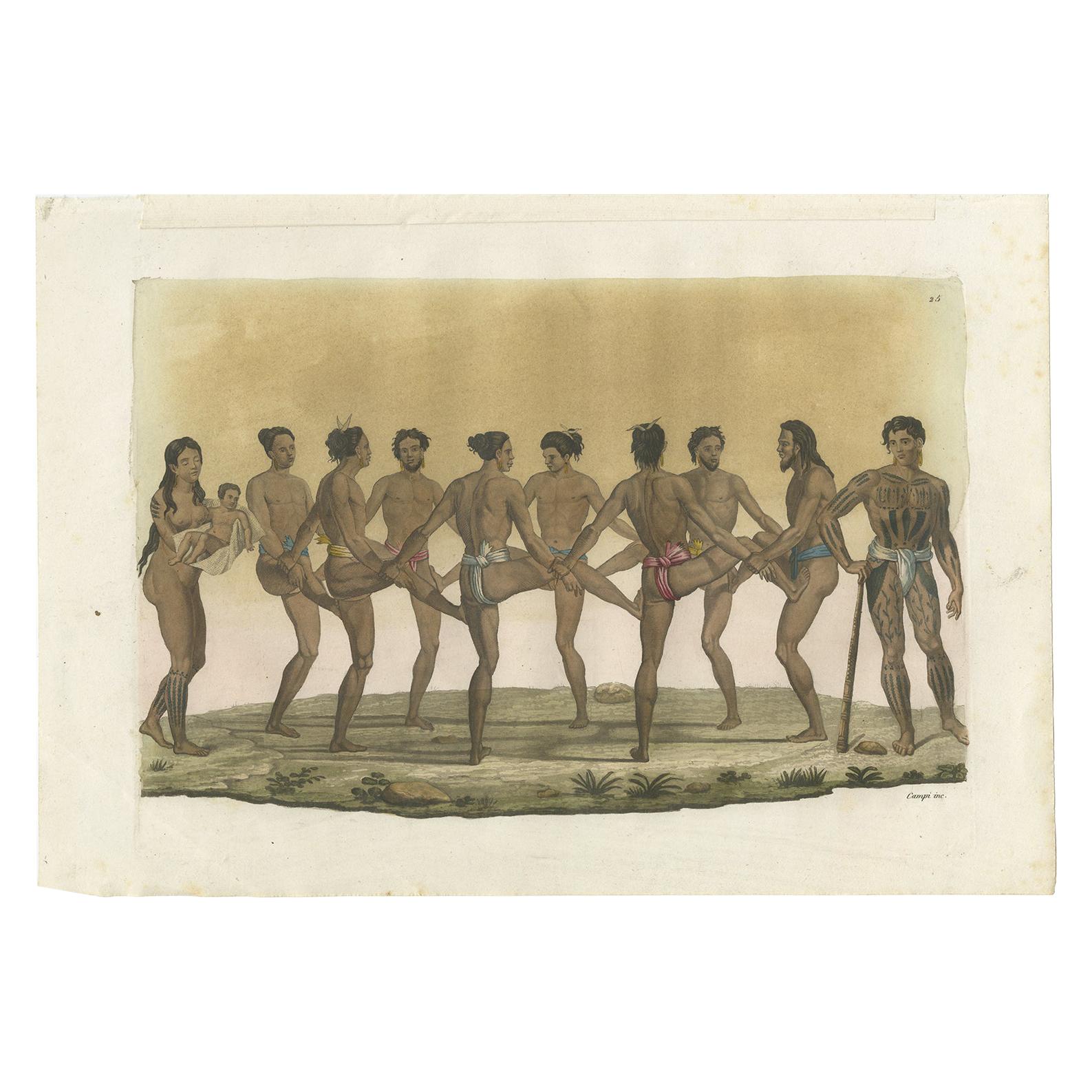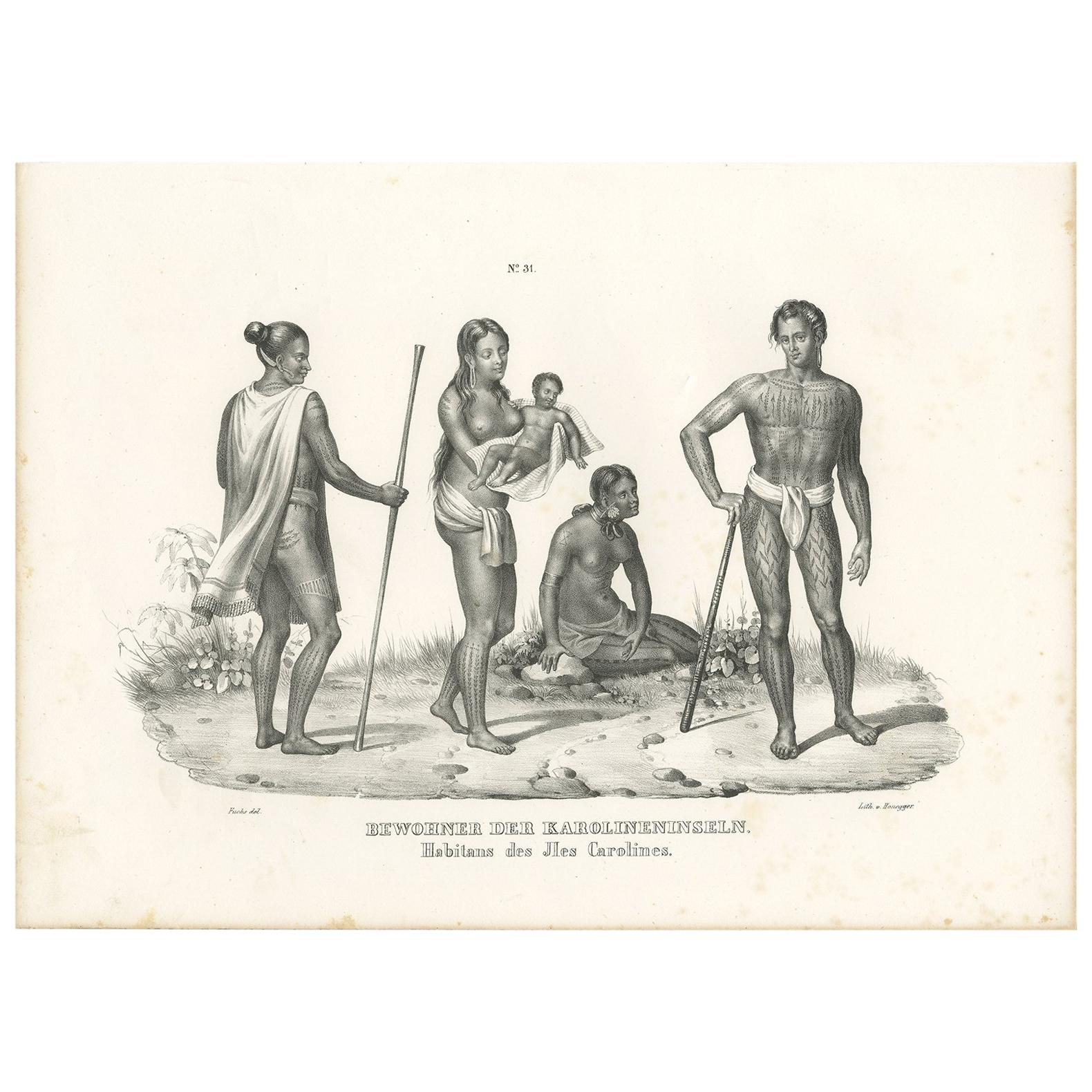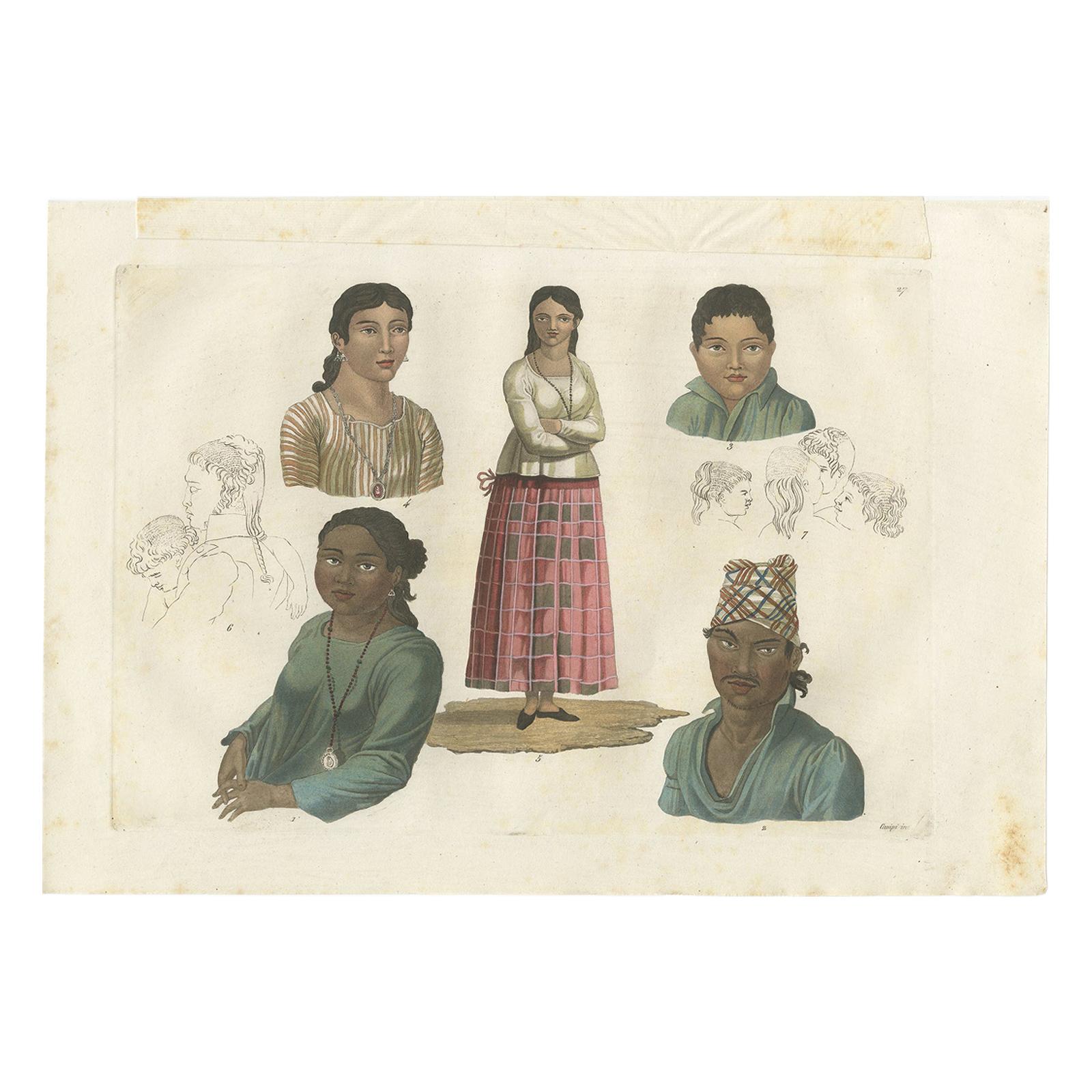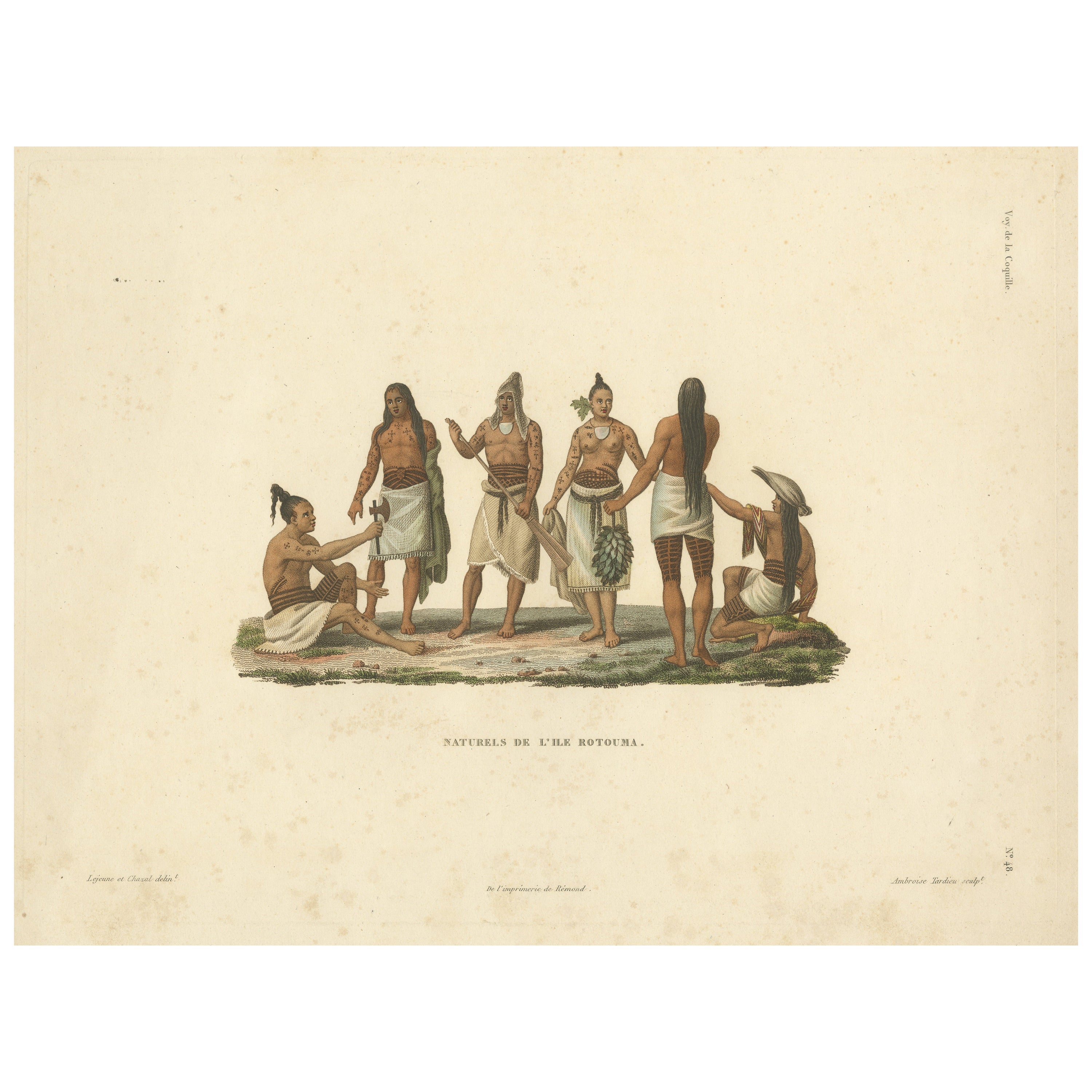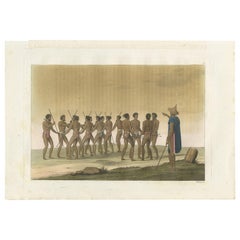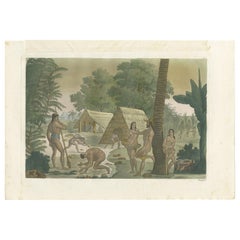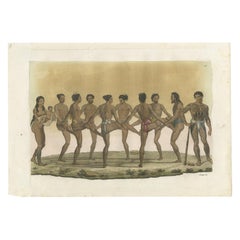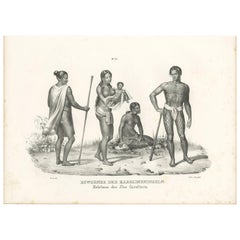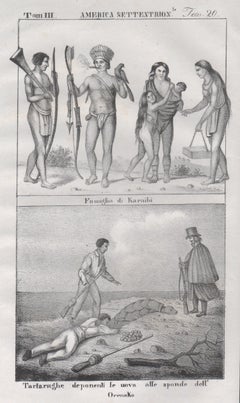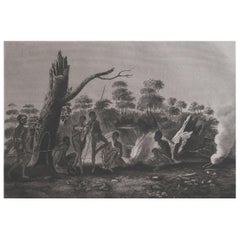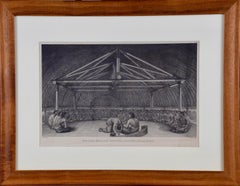Items Similar to Antique Print of Inhabitants of the Caroline Islands on Guam by Ferrario '1831'
Want more images or videos?
Request additional images or videos from the seller
1 of 5
Antique Print of Inhabitants of the Caroline Islands on Guam by Ferrario '1831'
$239.55
$299.4320% Off
£177.52
£221.9020% Off
€200
€25020% Off
CA$327.03
CA$408.7920% Off
A$363.81
A$454.7620% Off
CHF 190.71
CHF 238.3920% Off
MX$4,445.62
MX$5,557.0220% Off
NOK 2,428.47
NOK 3,035.5920% Off
SEK 2,286.07
SEK 2,857.5920% Off
DKK 1,522.78
DKK 1,903.4820% Off
Shipping
Retrieving quote...The 1stDibs Promise:
Authenticity Guarantee,
Money-Back Guarantee,
24-Hour Cancellation
About the Item
Original antique print of inhabitants of the Caroline Islands on Guam. This print originates from 'Costume Antico e Moderno: Palestine, China, India, Oceania' by Ferrario. Published 1831.
- Dimensions:Height: 9.45 in (24 cm)Width: 13.39 in (34 cm)Depth: 0.02 in (0.5 mm)
- Materials and Techniques:
- Period:
- Date of Manufacture:1831
- Condition:General age-related toning. Minor wear, blank verso. Protective sheet attached. Please study image carefully.
- Seller Location:Langweer, NL
- Reference Number:Seller: BG-12639-881stDibs: LU3054323599902
About the Seller
5.0
Recognized Seller
These prestigious sellers are industry leaders and represent the highest echelon for item quality and design.
Platinum Seller
Premium sellers with a 4.7+ rating and 24-hour response times
Established in 2009
1stDibs seller since 2017
2,494 sales on 1stDibs
Typical response time: 1 hour
- ShippingRetrieving quote...Shipping from: Langweer, Netherlands
- Return Policy
Authenticity Guarantee
In the unlikely event there’s an issue with an item’s authenticity, contact us within 1 year for a full refund. DetailsMoney-Back Guarantee
If your item is not as described, is damaged in transit, or does not arrive, contact us within 7 days for a full refund. Details24-Hour Cancellation
You have a 24-hour grace period in which to reconsider your purchase, with no questions asked.Vetted Professional Sellers
Our world-class sellers must adhere to strict standards for service and quality, maintaining the integrity of our listings.Price-Match Guarantee
If you find that a seller listed the same item for a lower price elsewhere, we’ll match it.Trusted Global Delivery
Our best-in-class carrier network provides specialized shipping options worldwide, including custom delivery.More From This Seller
View AllAntique Print of Inhabitants of the Caroline Islands by Ferrario '1831'
Located in Langweer, NL
Original antique print of inhabitants of the Caroline Islands. This print originates from 'Costume Antico e Moderno: Palestine, China, India, Oceania'...
Category
Antique Mid-19th Century Prints
Materials
Paper
$239 Sale Price
20% Off
Antique Print of Inhabitants of the Mariana Islands by Ferrario '1831'
Located in Langweer, NL
Original antique print of inhabitants of the Mariana Islands. This print originates from 'Costume Antico e Moderno: Palestine, China, India, Oceania' b...
Category
Antique Mid-19th Century Prints
Materials
Paper
$239 Sale Price
20% Off
Antique Print of Dancing Inhabitants of the Caroline Islands by Ferrario '1831'
Located in Langweer, NL
Original antique print of dancing inhabitants of the Caroline Islands. This print originates from 'Costume Antico e Moderno: Palestine, China, India, ...
Category
Antique Mid-19th Century Prints
Materials
Paper
$239 Sale Price
20% Off
Antique Print of Natives of the Caroline Islands by Honegger, 1836
Located in Langweer, NL
Antique print titled 'Bewohner der Karolineninseln, Habitans des Iles Carolines'. This print depicts natives of the Caroline Islands (pacific). Origin...
Category
Antique Mid-19th Century Prints
Materials
Paper
$167 Sale Price
20% Off
Antique Print of Various Inhabitants of the Mariana Islands by Ferrario, '1831'
Located in Langweer, NL
Original antique print of various inhabitants of the Mariana Islands. This print originates from 'Costume Antico e Moderno: Palestine, China, India, Oc...
Category
Antique Mid-19th Century Prints
Materials
Paper
$191 Sale Price
20% Off
"Natives of the Island of Rotuma: Antique Ethnographic Print, circa 1825
Located in Langweer, NL
This antique print titled "Naturels de l'Ile Rotouma" depicts the indigenous people of the Island of Rotuma. The print offers a glimpse into the appearance and attire of the island's...
Category
Antique Mid-19th Century Prints
Materials
Paper
$364 Sale Price
20% Off
You May Also Like
Caribbean Indigenous People / Orinoco, America, mid 19th century lithograph.
Located in Melbourne, Victoria
'Famiglia di Karaibi' / 'Tartarnughe deponenti le uova alle sponde dell' Orenoko''
Italian lithograph, c1841. Originally from 'Galleria universale di tutti i popoli del mondo' by Gi...
Category
Mid-19th Century Naturalistic Figurative Prints
Materials
Lithograph
Original Antique Ethnographical Print, Figures, New South Wales, Australia, 1809
Located in St Annes, Lancashire
Wonderful ethnographical print.
A copper-plate engraving after Lesieur
Published by Sherwood, Neely & Jones. Dated 1809
Unframed.
Category
Antique Early 1800s English Folk Art Prints
Materials
Paper
Guam, Convent and native inhabitants, mid 19th century lithograph. Oceania.
Located in Melbourne, Victoria
'Convento di agagna nell' Isola Guam. Occupazioni domestiche in Guam.'
Italian lithograph, c1841. Originally from 'Galleria universale di tutti i popoli del mondo' by Giuseppe Anton...
Category
Mid-19th Century Naturalistic Figurative Prints
Materials
Lithograph
"King of the Friendly Islands" (Tonga); Engraving from Captain Cook's 3rd Voyage
By John Webber
Located in Alamo, CA
"Poulaho, King of the Friendly Islands, Drinking Kava" is an engraving created by William Sharp (1749-1824), from a drawing by John Webber (1752-1793), who was the artist on Captain James Cook's 3rd and final voyage of discovery. It was published in the atlas of "A Voyage to the Pacific Ocean Undertaken by the Command of His Majesty, for Making Discoveries in the Northern Hemisphere", the official British Admirality sanctioned journal published upon completion of the voyage in London in 1784 by Strahan & Cadell.
Captain Cook visited Tonga on his 3rd voyage, which he named The Friendly Islands because of the warm welcome he and his crew received, unlike some of the other more hostile Pacific islands. The engraving depicts Cook and his men observed a kava ceremony at the village of Mu’a on Tongatapu. King Paulaho sits in the centre foreground, his back to the spectator with a man kneeling before him. The ceremonial mat depicted behind Paulaho indicates that nobody was allowed to sit behind him. The figure in the centre holds a single cup, referring to the Tongan custom of offering the cup to the king first. Kava is native to the islands of the South Pacific and was first described for English readers in 1768 by Captain James Cook. The kava root has been used for centuries as a central feature of ceremonies and celebrations because it was able to bring about a calming and pleasant social atmosphere. The root was crushed and processed into coconut milk to become the focal ceremonial beverage, simply referred to as kava.
This engraving is presented in a Koa wood frame and a white mat. Koa wood is legendary in Hawaii. There are occasional faint spots, but the print is otherwise in very good condition. This amazing Koa wood is native to Hawaii and it is known for the deep rich colors and varied grain pattern. Koa has an honored heritage in Hawaii and is highly revered and sacred. The word “koa” means “warrior” in Hawaiian. The warriors of King Kamehameha the Great, created canoes and weapons from a wood plentiful on the Big Island of Hawaii. This wood became synonymous with the warriors themselves, and it became known as koa.
There are three other engravings listed from the official journal of Captain Cook's 3rd voyage available that are presented in identical Koa wood frames and mats (LU117324682422, LU117324684052, LU117324684032). They would make a wonderful grouping for a display of 2, 3 or 4 prints. A discount is available for a grouping depending on the number of items included.
Captain Cook is remembered as one of the greatest explorers and navigators in history. His explorations included Australia, New Zealand and islands of the South Pacific and the northwest coast of North America. Hawaii was discovered by Captain Cook during this voyage. Hawaii was originally called The Sandwich Islands in honor of The Earl of Sandwich...
Category
1780s Realist Figurative Prints
Materials
Engraving
"A Dance in Otaheite" (Tahiti), Engraving from Captain Cook's 3rd Voyage
By John Webber
Located in Alamo, CA
"A Dance in Otaheite" (Tahiti) is an engraving created by William Sharp (1749-1824), from a drawing by John Webber (1752-1793), who was the artist on Captain James Cook's 3rd and final voyage of discovery. It is a plate in the atlas of "A Voyage to the Pacific Ocean Undertaken by the Command of His Majesty, for Making Discoveries in the Northern Hemisphere", the official British Admirality sanctioned journal published upon completion of the voyage in London in 1784 by Strahan & Cadell.
Two women and two men wearing ceremonial costumes, performing a dance outdoors standing on a mat. Three men are playing the drums in the background, in front of a thatched roof building. An audience of men are sitting on both sides of the stage. By the time Webber arrived in Tahiti, 'south sea' imagery had become familiar. Webber gave concentrated attention to dance. He had the opportunity to distinguish the Tahitian dance from the more formalized dancing of Tonga. Whereas they seem to have called to mind the more formal dances of antiquity, the Tahitian dancing aroused memories of peasant and folk dancing.
This engraving is professionally framed in Koa wood. Koa wood is legendary in Hawaii. Not only is this amazing wood native to Hawaii, but it is known for the deep rich colors and varied grain pattern. Koa has an honored heritage in Hawaii and is highly revered and sacred. The word “koa” means “warrior” in Hawaiian. The warriors of King Kamehameha the Great, created canoes and weapons from a wood plentiful on the Big Island of Hawaii. This wood became synonymous with the warriors themselves, and it became known as koa.
The print is in excellent condition.
There are three other engravings listed from the official journal of Captain Cook's 3rd voyage available that are presented in identical Koa wood frames and double mats (LU117324682432, LU117324684052, LU117324684062). They would make a wonderful grouping for a display of 2, 3 or 4 prints. A discount is available for a grouping depending on the number of items included.
Hawaii was discovered by Captain Cook during this voyage. Hawaii was originally called The Sandwich Islands in honor of The Earl of Sandwich...
Category
1780s Realist Landscape Prints
Materials
Engraving
Jeune Fille de l'ile Pitcairn - Lithograph by Auguste Wahlen - 1844
Located in Roma, IT
Jeune Fille de l'ile Pitcairn is a hand colored lithograph realized by Auguste Wahlen in 1844.
Good conditions.
The artwork belongsto the Suite Moeurs, usages et costumes de tous l...
Category
1840s Modern Figurative Prints
Materials
Lithograph
